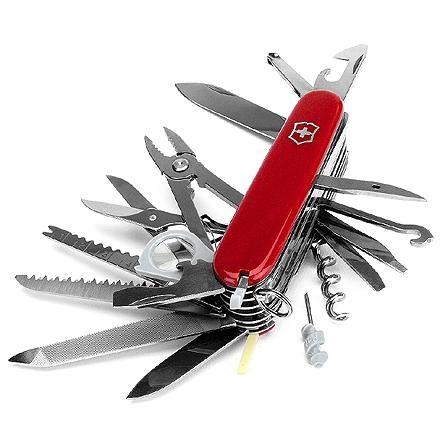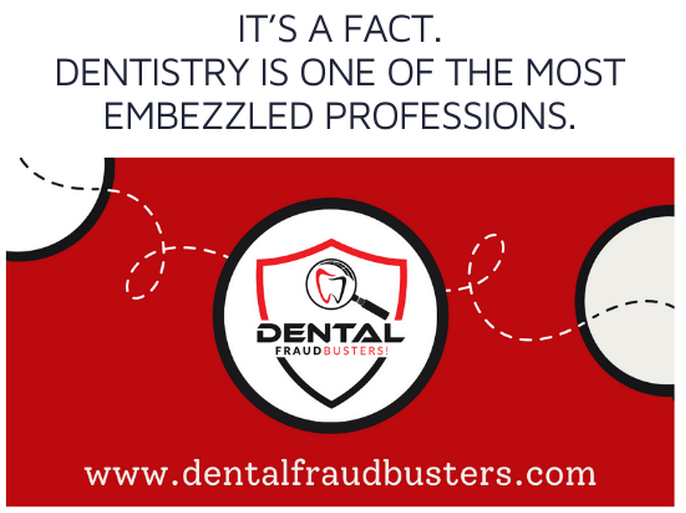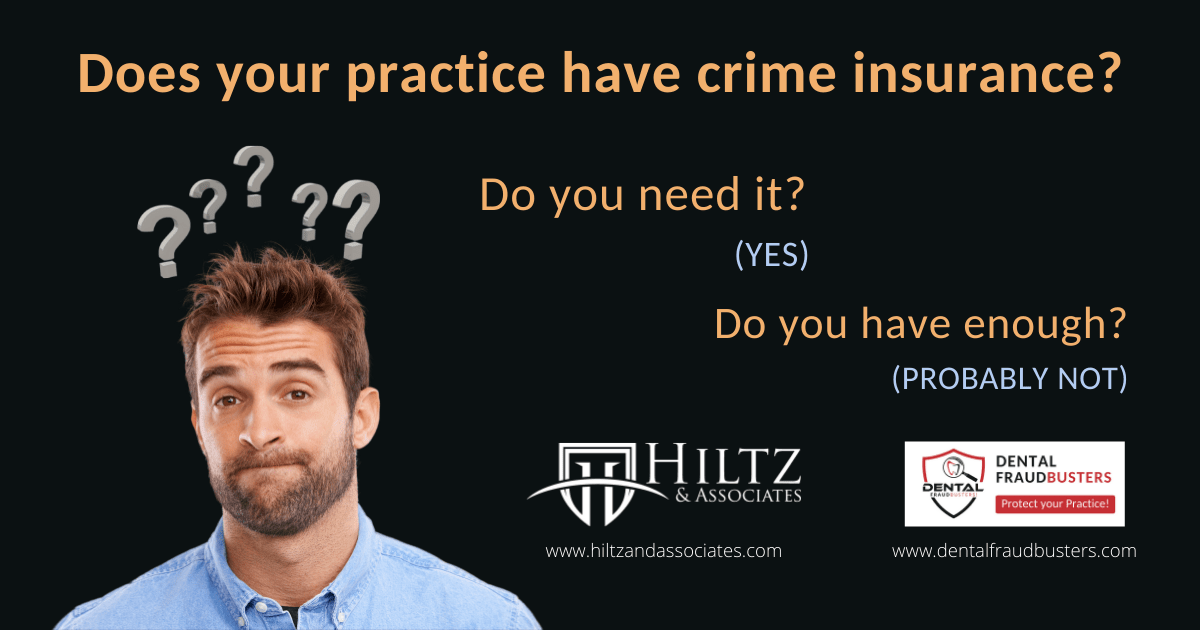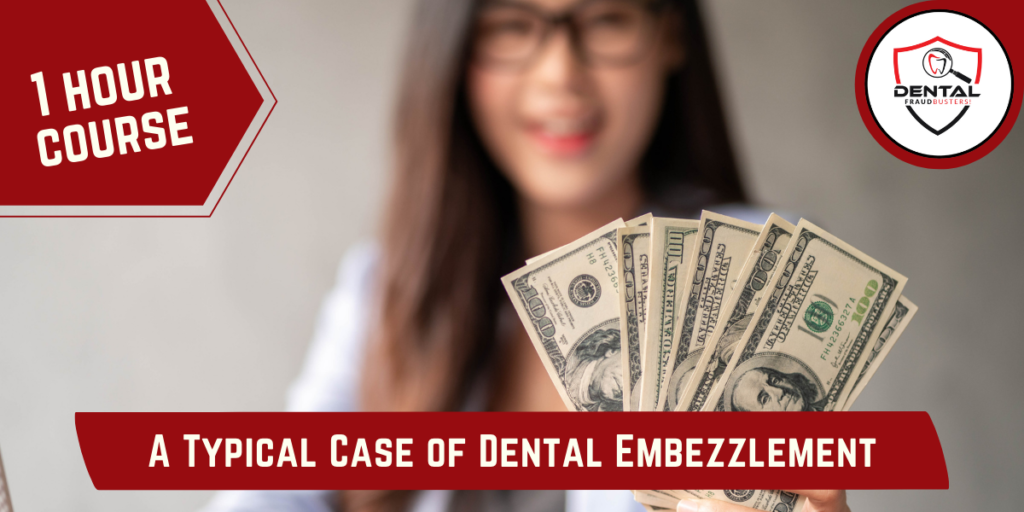Does my practice have crime insurance?
Posted:
Last Updated:
“Employee dishonesty coverage is a must-have for every dental practice.”
– William (Bill) Hiltz
In this post:
- What is Employee Dishonesty Coverage?
- What is a Business Owner’s Policy?
- What is Crime Insurance?
- What does Crime Insurance cover?
- How much Employee Dishonesty Coverage do you need?
What is Employee Dishonesty coverage?
Employee dishonesty coverage will cover losses (up to a limit) as a result of employee theft of money, securities, or property.
Employee dishonesty coverage can be purchased separately, but in many cases it is bundled with other forms of insurance in a Business Owner’s Policy.
What is a Business Owner’s Policy?
A Business Owner’s Policy (BOP) packages general liability insurance and commercial property insurance into one bundle, which typically costs less than if the policies were bought separately.

Many Business Owner’s Policy bundles include crime insurance, other policies may require you to opt-in for this type of coverage.
What is Crime Insurance?
Crime insurance is basically a “basket of coverages” that protect you against dishonest acts of employees and non-employees..
TIP: check your dental Business Owner's Policy for crime coverage. If you do not have it, ask your agent or broker if you can opt-in to purchase it.
What does Crime Insurance cover?
Crime insurance will generally cover these forms of dishonesty:
Employee Dishonesty Coverage
This coverage is intended to cover losses due to employee theft of money, securities, or property. Employee theft is common and an embezzled dental practice can easily incur losses in excess $100,000.
Computer Fraud Coverage
Insures you against theft of money or property by using a computer to transfer the money or property from the insured’s premises or bank to another person or place. (this does not cover theft of information, so if your patient list is stolen, this coverage will not help)
Funds Transfer Fraud Coverage
Insures against a loss when funds are fraudulently transferred to a third party due to a security failure on your network.
Money and Securities Coverage
Insures for losses resulting from theft, disappearance, or destruction of the money and securities while in the custody of a messenger. (example: losses due to being robbed while bringing money to the bank for deposit)
Credit Card, Debit Card or Automated Teller Card Coverage
Insures against losses as a result of falsification or alteration of a document required when using a credit card, debit card or automated teller card issued in the name of the insured.
TIP: consider obtaining a credit card in the your business name as this coverage will not cover your personal credit card.
BONUS POINTS IF YOUR POLICY HAS “Claim Expense Coverage“
Claim expense coverage will help you to offset the cost of a forensic audit or fraud examination required to establish a loss and to present your claim.
This is sometimes called a “professional fee endorsement.” Many policies do not include claim expense coverage, and for those that have it; the coverage amount is typically between $2500 and $10,000.
Since forensic audit and fraud examination fees are not inexpensive, I recommend your crime insurance have claim expense coverage of $10,000.
TIP: check your dental Business Owner's Policy for claim expense coverage. If you do not have it, ask if you can opt-in to purchase it.
How much Employee Dishonesty Coverage do you need?
Despite 3 out of 5 dentists reporting embezzlement during their careers, an alarming number of dental offices still DO NOT have employee dishonesty coverage.
Many practice owner’s discover they do not have employee dishonesty coverage until after they have been embezzled.

Because dental practices are particularly vulnerable to employee theft; to be protected from the financial loss that dishonesty can cause, I recommend you obtain a minimum of $50,000 in dishonesty coverage for each owner dentist. Another rule of thumb is to have coverage equal to 5% of annual practice revenue.
To learn more about dental practice embezzlement
Register for this FREE
Dental FraudBuster On-Demand Course
You probably have heard the statistics, and they are not good.
3 out of every 5 dentists end up being embezzled. We can do better!
Complete the course to receive a “Proof of Course Completion” for 1 CEU.


